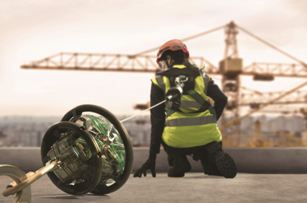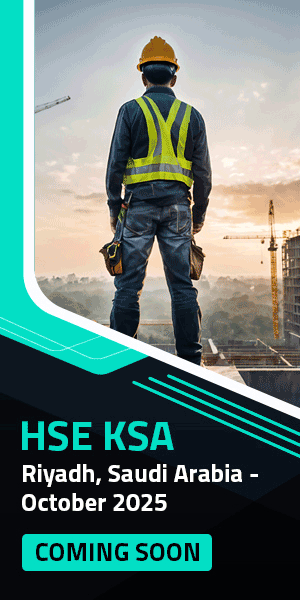In an article published in Health, Safety & Security Review Middle East magazine, Jon Rowan, product line manager at MSA Safety, explores when, where and how self-retracting lifelines (SRLs) should be deployed for vertical fall arrest protection, and looks at the features that define the most reliable, robust and best lifetime-value equipment
Despite significant advances in risk awareness and safety technology, falls from height remain a significant cause of injury and death.
There are many scenarios where working at height is unavoidable, and some of the most hazardous work sees operatives working on top of an elevated surface or structure. It is here where selecting the correct fall arrest solution is critical.
The hierarchy of fall protection is the starting point to determine what type of approach to working at height and/or fall protection is required, and why.
• The preferred solution to all fall hazards is elimination
• Passive fall protection: physical barriers such as guardrails around unprotected edges, for example
• Fall restraint systems are erected in such a manner that a fall cannot occur. They use PPE to restrict the worker’s range of movement so they cannot physically travel to the fall hazard
• Fall arrest systems are erected in such a manner that a fall can occur, but the fall is arrested within acceptable force and clearance margins. A suitable rescue procedure would then need to be implemented.
One of the most effective and widely used fall arrest solutions today is the Self-Retracting Lifeline (SRL). SRLs are repacing lanyards and rope grabs as they typically last longer, retract on movement, offer faster lock on and are easier to store.
A synthetic line or metallic cable attached to the worker’s harness automatically extends and retracts form a floor or overhead anchored container unit as the worker moves. In the event of sudden fall, the product will ‘lock on’ to arrest the force of the fall, and an energy absorption system will then limit the impact of that force on the body of the worker in the harness.
The article goes on to consider the factors to consider when specifying the correct SRL, such as the application and the environment, as well as the fall clearance. It also highlights the advisability of investing in high quality PPE, which can yield lifetime savings and result in lower total cost of ownership.
The full article can be seen on p12 of the current issue, https://www.hssreview.com/current-issue






